Hwanil Choi
EXAONE Path 2.0: Pathology Foundation Model with End-to-End Supervision
Jul 09, 2025Abstract:In digital pathology, whole-slide images (WSIs) are often difficult to handle due to their gigapixel scale, so most approaches train patch encoders via self-supervised learning (SSL) and then aggregate the patch-level embeddings via multiple instance learning (MIL) or slide encoders for downstream tasks. However, patch-level SSL may overlook complex domain-specific features that are essential for biomarker prediction, such as mutation status and molecular characteristics, as SSL methods rely only on basic augmentations selected for natural image domains on small patch-level area. Moreover, SSL methods remain less data efficient than fully supervised approaches, requiring extensive computational resources and datasets to achieve competitive performance. To address these limitations, we present EXAONE Path 2.0, a pathology foundation model that learns patch-level representations under direct slide-level supervision. Using only 37k WSIs for training, EXAONE Path 2.0 achieves state-of-the-art average performance across 10 biomarker prediction tasks, demonstrating remarkable data efficiency.
Rarity Score : A New Metric to Evaluate the Uncommonness of Synthesized Images
Jun 26, 2022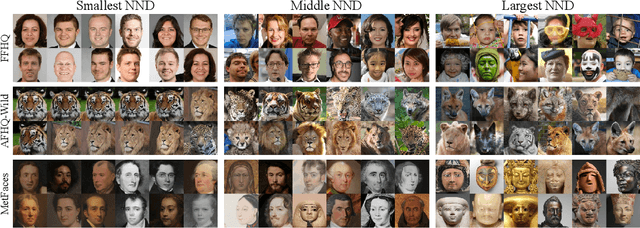


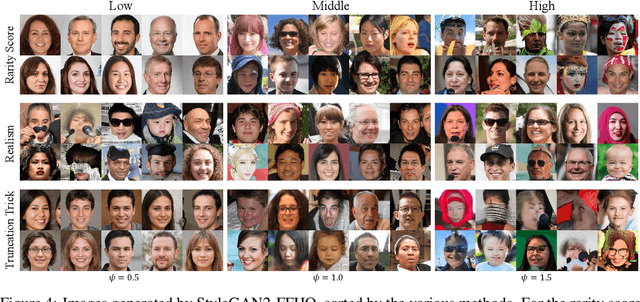
Abstract:Evaluation metrics in image synthesis play a key role to measure performances of generative models. However, most metrics mainly focus on image fidelity. Existing diversity metrics are derived by comparing distributions, and thus they cannot quantify the diversity or rarity degree of each generated image. In this work, we propose a new evaluation metric, called `rarity score', to measure the individual rarity of each image synthesized by generative models. We first show empirical observation that common samples are close to each other and rare samples are far from each other in nearest-neighbor distances of feature space. We then use our metric to demonstrate that the extent to which different generative models produce rare images can be effectively compared. We also propose a method to compare rarities between datasets that share the same concept such as CelebA-HQ and FFHQ. Finally, we analyze the use of metrics in different designs of feature spaces to better understand the relationship between feature spaces and resulting sparse images. Code will be publicly available online for the research community.
Can We Find Neurons that Cause Unrealistic Images in Deep Generative Networks?
Jan 20, 2022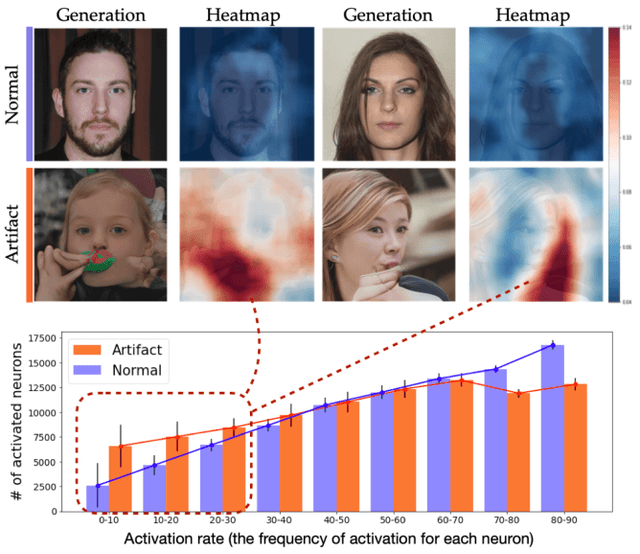

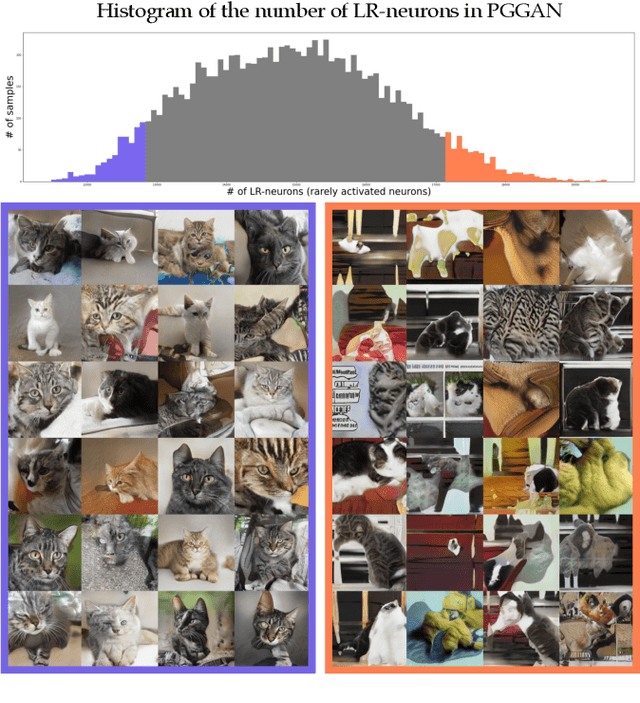

Abstract:Even though image generation with Generative Adversarial Networks has been showing remarkable ability to generate high-quality images, GANs do not always guarantee photorealistic images will be generated. Sometimes they generate images that have defective or unnatural objects, which are referred to as 'artifacts'. Research to determine why the artifacts emerge and how they can be detected and removed has not been sufficiently carried out. To analyze this, we first hypothesize that rarely activated neurons and frequently activated neurons have different purposes and responsibilities for the progress of generating images. By analyzing the statistics and the roles for those neurons, we empirically show that rarely activated neurons are related to failed results of making diverse objects and lead to artifacts. In addition, we suggest a correction method, called 'sequential ablation', to repair the defective part of the generated images without complex computational cost and manual efforts.
Automatic Correction of Internal Units in Generative Neural Networks
Apr 13, 2021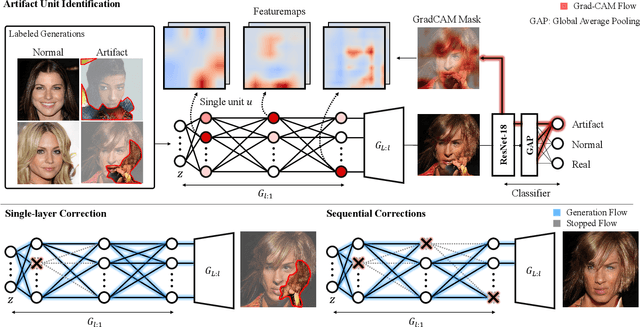

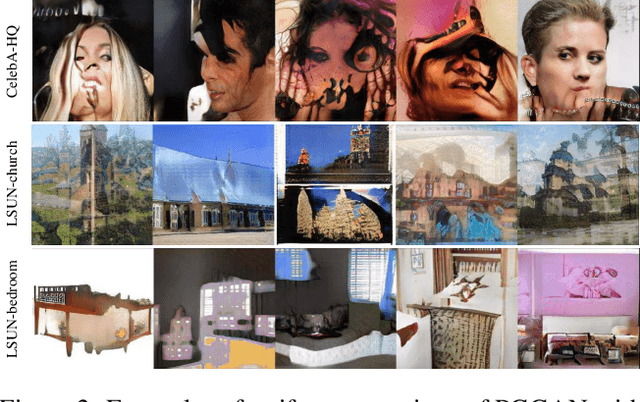

Abstract:Generative Adversarial Networks (GANs) have shown satisfactory performance in synthetic image generation by devising complex network structure and adversarial training scheme. Even though GANs are able to synthesize realistic images, there exists a number of generated images with defective visual patterns which are known as artifacts. While most of the recent work tries to fix artifact generations by perturbing latent code, few investigate internal units of a generator to fix them. In this work, we devise a method that automatically identifies the internal units generating various types of artifact images. We further propose the sequential correction algorithm which adjusts the generation flow by modifying the detected artifact units to improve the quality of generation while preserving the original outline. Our method outperforms the baseline method in terms of FID-score and shows satisfactory results with human evaluation.
 Add to Chrome
Add to Chrome Add to Firefox
Add to Firefox Add to Edge
Add to Edge